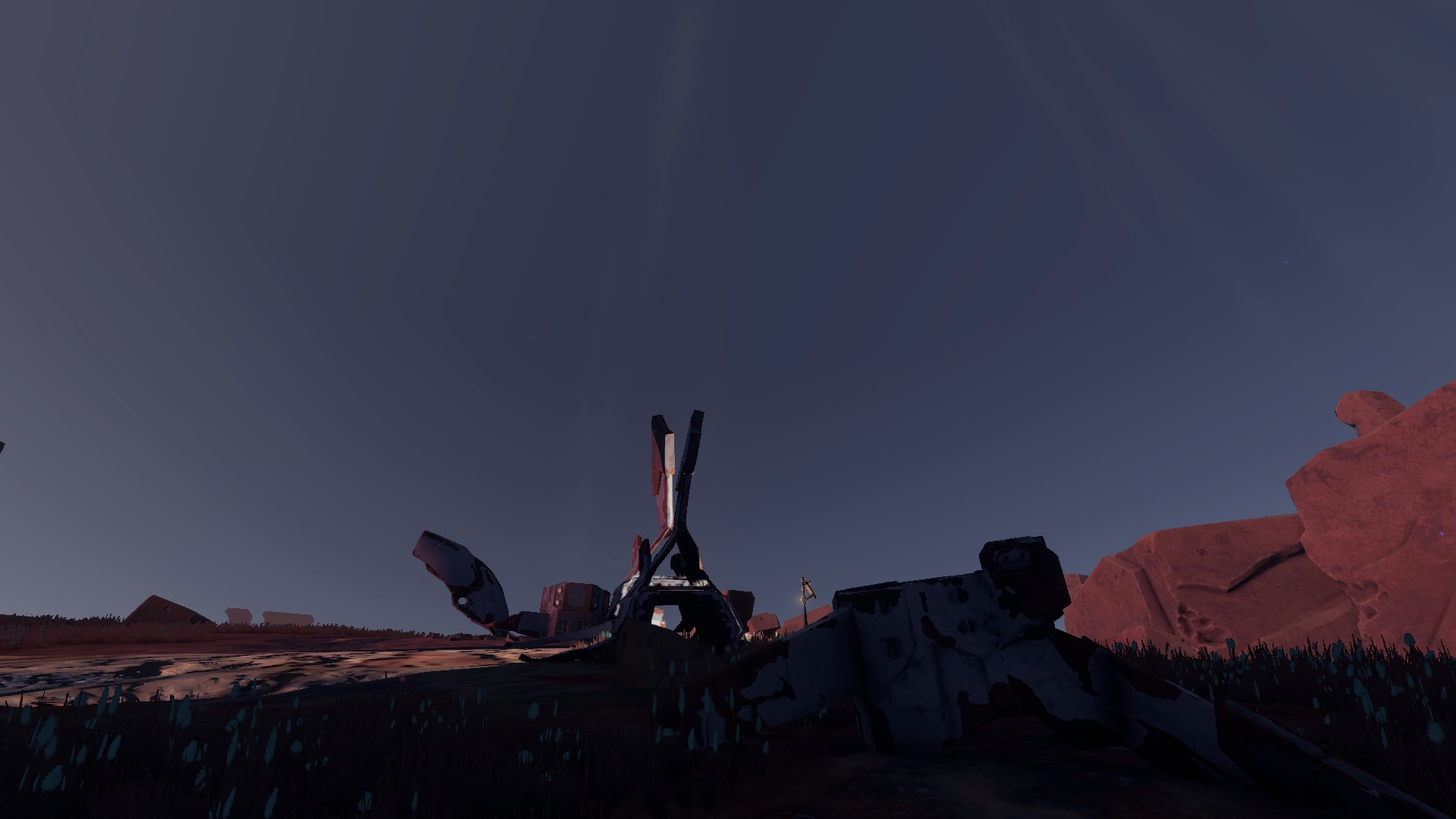The Signal from Tölva
Filed Under: Gaming

The Signal from Tölva is a game about robots, remnants and ruins.
It has a lot in common with developer Big Robot’s previous game, Sir, You Are Being Hunted, a first-person stealth-em-up set in a procedurally-generated pastiche of the English countryside in which humans are pursued across bleak rural and post-industrial landscapes by aristocratic robots and their mechanical hounds. It’s like Tory Britain, but with the possibility of escape.
The planet Tölva is less Doctor Who and more Roadside Picnic. It’s had a rough time. At some point in its past debris from countless wars crashed onto its surface, leaving only traces of what was there before, and now the drones of three warring factions fight over the remaining spoils in a remote-controlled conflict, searching for something. That’s where you come in.
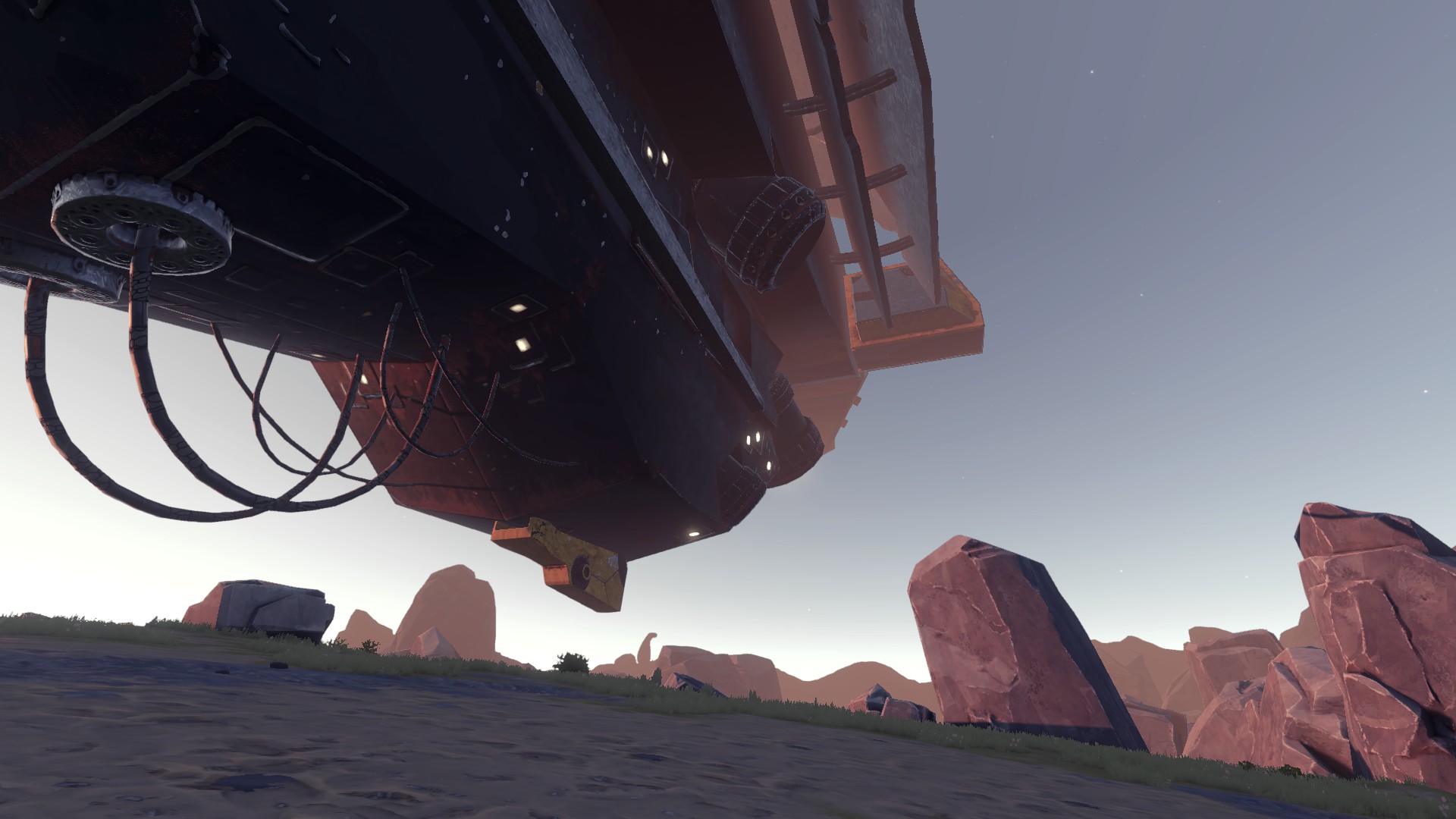
You’re hacking into the drone network of one of the factions, hijacking their automata so you can explore the planet and discover more about the titular Signal. That’s where the mandatory story stops and your freedom to get on with the business of playing the game begins.
Most of what you do is walk and look at things. The experience of simply traversing Tölva’s scarred hills and rubble-strewn valleys is remarkably intense. There are moments of stillness during which you warily scan the distance for threats or watch some of the planet’s wildlife sail serenely across the sky. Then a distant battle breaks the silence, as shockwaves from explosions echo off the stones, and the austere synths of the game’s soundtrack give momentum to your hike. Entering one of the map’s numerous strange places, your vision and hearing become warped and glitchy, sometimes fantastically so, and you feel a bit like the pilot of a deep sea exploration drone. It’s very reminiscent of some of the best times I had with the Stalker games.
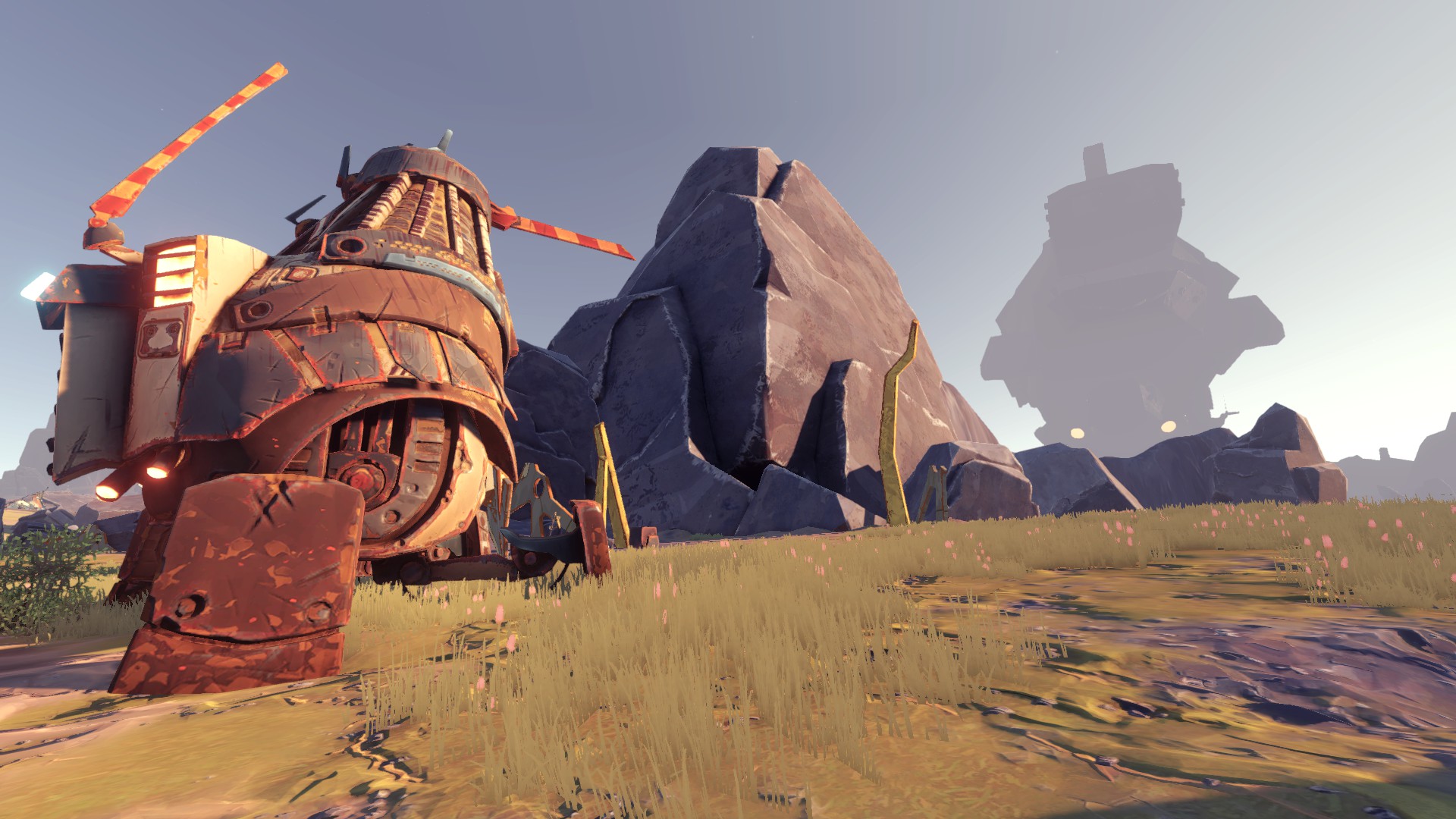
Everything is styled after the magnificent concept art of Ian McQue, giving the feeling that you’re walking through a painting that’s been masterfully brought to life. It’s so eminently screenshot-able that I amassed a hundred or so screenshots in my playthrough. Picking out the ones to use for this post was quite a challenge.
Big Robot’s approach to bringing the McQue’s art to life is worth noting. In one video and accompanying blog post the developers discussed how they deconstructed McQue’s style, identifying the components of his ‘visual vocabulary’ from which create the modular art assets used to construct a game world. That kind of craftsmanship, attention to detail and creative pragmatism is on display all over The Signal from Tölva. It’s a fine example of how a small team of savvy and skilled-up individuals can come together to create impressive work, and absolutely worth reading about in their blog posts and various interviews.
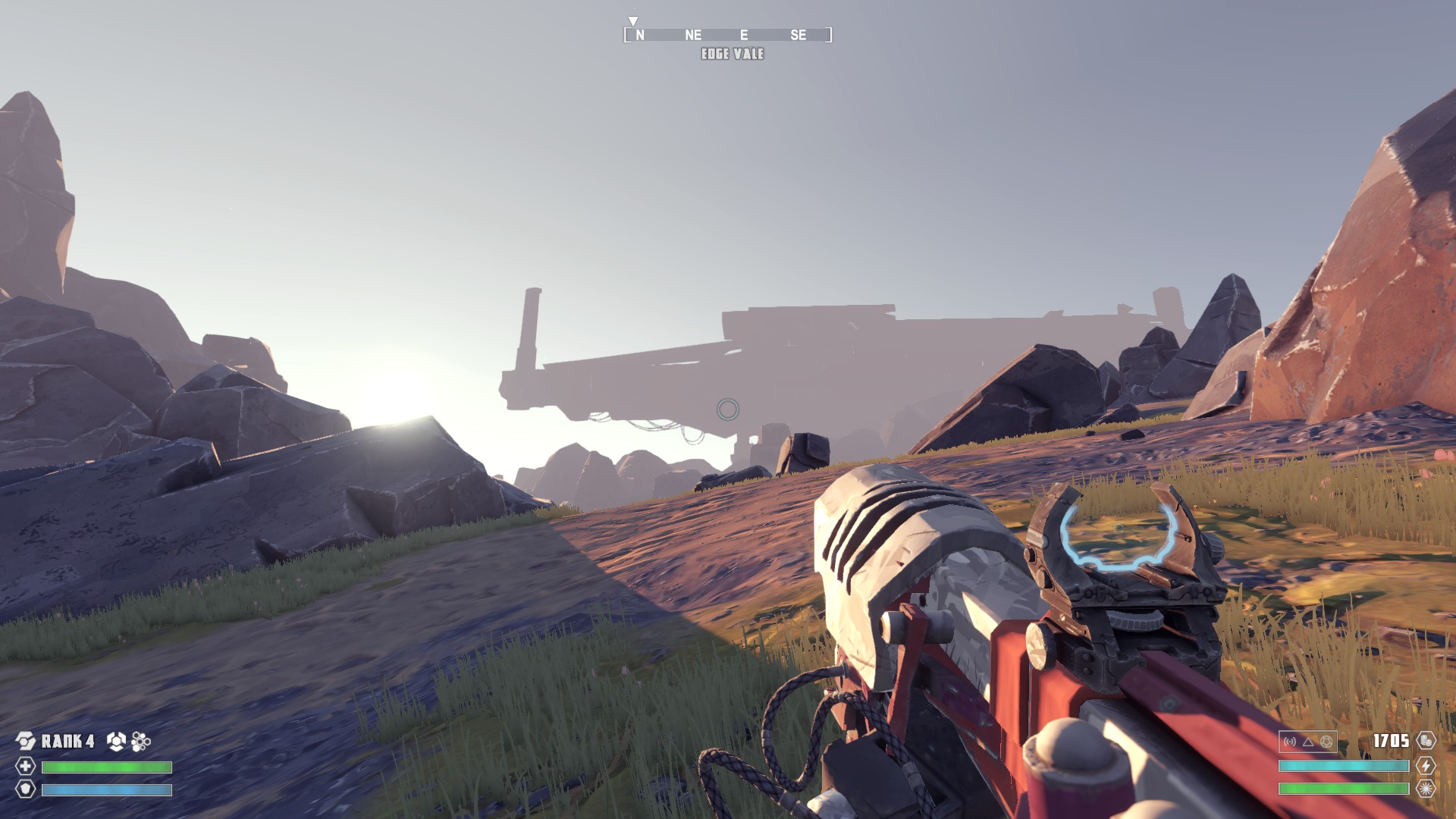
Bots Behaving Badly
Eventually you will have to fight. In Sir combat was something to be avoided, a frantic and unfair last resort that usually ended with your death. Here combat is inevitable, necessary, and you’re much better equipped to take part in it. Your hitpoints regenerate and the price of death is low – when your current host is destroyed you just hijack a new robot body to inhabit at any strategic point controlled by your faction.
That doesn’t mean charging headlong into the fray is a valid strategy. Battles you don’t plan are usually battles you don’t win. Combat is methodical, with a high time-to-kill and tension loaded into long reload and cool-down times. Enemy and allied robots all use the same set of weapons and tools as you, so you’ll never be confronted with something you yourself can’t bring into battle.
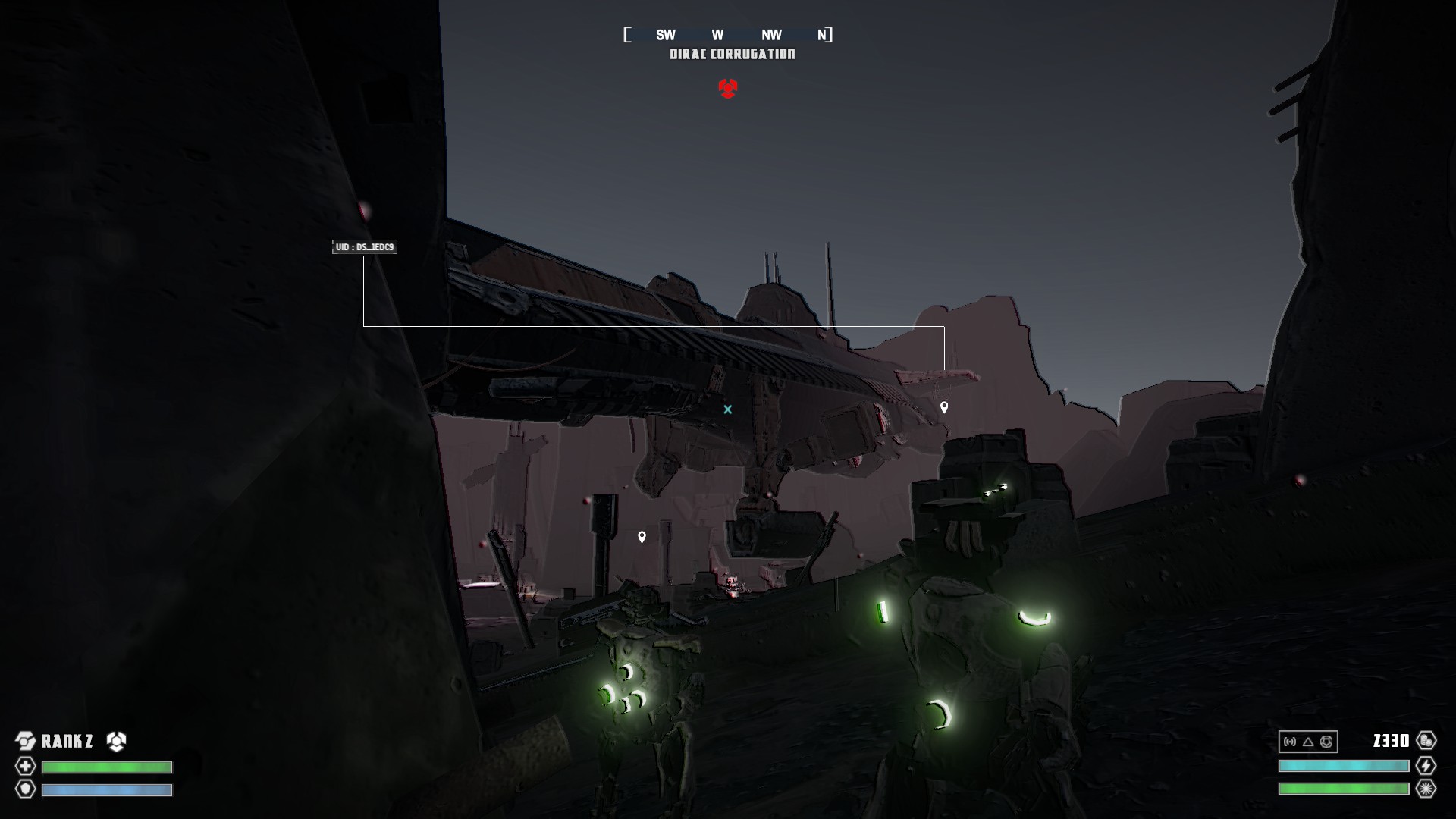
Progression mechanics are of the sort people are probably used to from mainstream open world games, albeit limited in scope. Completing missions unlocks new weapons and powers, while the resources needed to purchase them must be salvaged from wreckages and by killing enemies. There’s not a lot of variety in the range of weapons on offer – there are five main archetypes and the arsenal is padded out with slight variations of them at different levels of effectiveness – but it’s enough to scrape by.
One of your options is the fantastically named ‘SQ-UID Phreaker’, a tool that gives you command of robots from your own faction. You have limited control here: you can tell them to follow you or move to a particular location, but not as individuals. You can’t customize the loadout of your squad members, so if you want to build the perfect team, you’ll have to assemble it by luck. Nonetheless having a squad of robo-buddies at your back as you march across the map is a comforting thing to have in what would otherwise be a very lonely, isolating game.
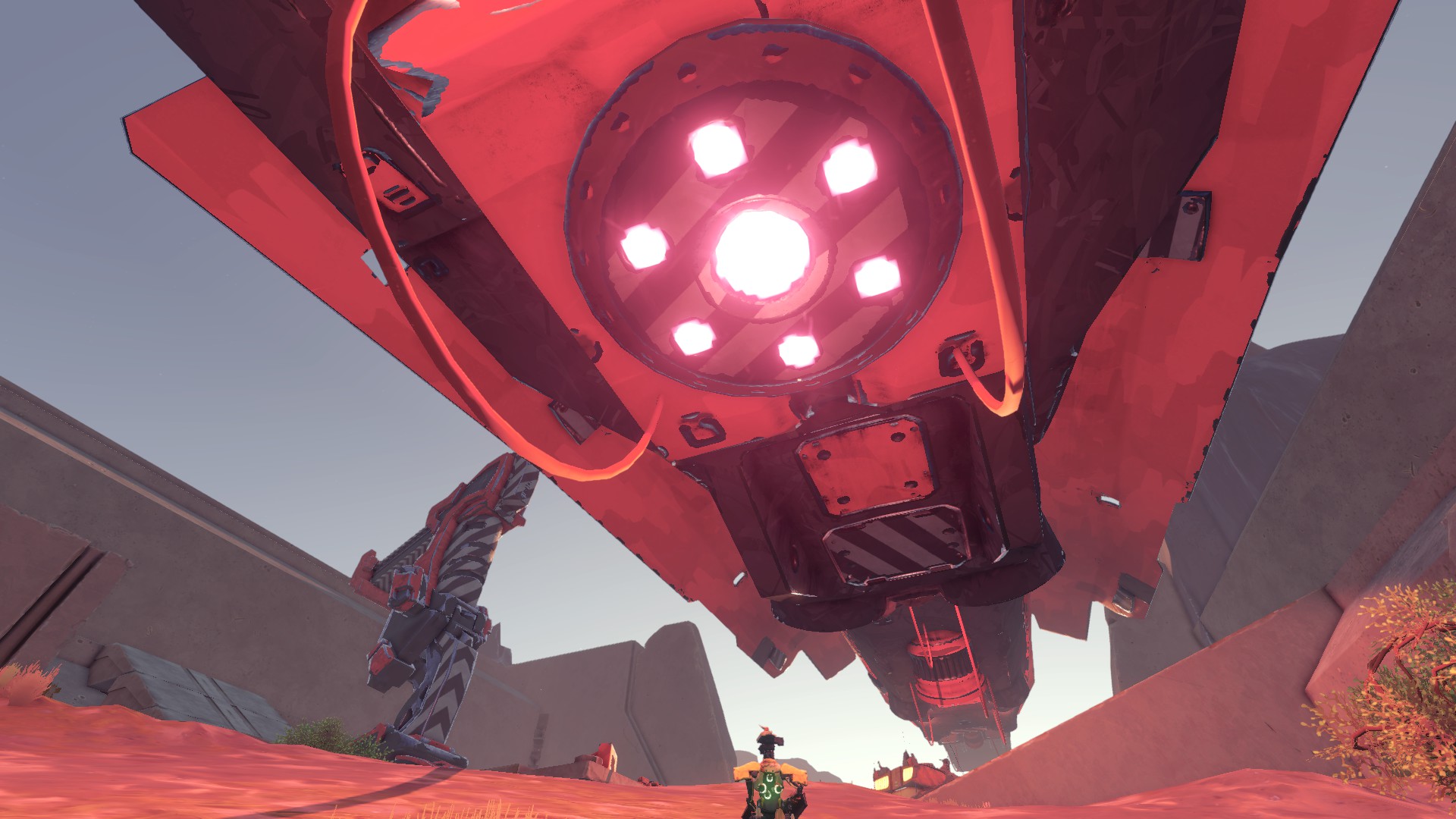
It’s very easy to digest. Playable in small chunks, it’s always possible to make some measurable form of progress in 15 minutes, or at least to go on a pleasant hike. Hoovering up some resources from a salvage site, searching for rarities and nuggets of story in nooks and crannies, even striking out at an enemy bunker in an attempt to capture it: all possible within a short time-frame, each its own mini-adventure with potential for surprising encounters. Dynamic, un-scripted stuff just happens without any player input: squads of robots get into scraps with one another, capturing and re-capturing territory from each others’ factions, including your own.

The planet seems to be waking up, or perhaps just turning over in its sleep. Like the irradiated and alien Zone of the Stalker games, when it is not actively hostile to your presence, it is at best merely indifferent. It appears to be a graveyard for much older things than the crashed war machines that litter its surface. It’s difficult to figure out what’s going on and why because the scraps of information you find about the world you’re in are brief and sparse. What you do uncover as the game goes on is eldritch and unsettling. Cosmic horror for the information age. If I ever do understand quite what The Signal from Tölva is about, even just on the surface, it will have taken me a while to reach those conclusions. I welcome that mystery.
Sir, You Are Being Hunted never grabbed me like this, never left such a dent. Not many games do. Actually, honestly, I think that what Big Robot have created with Tölva deserves to be celebrated as a classic in its genre. It’s smartly made and smart to play, beautiful to look at and haunting to listen to. I hope you give it a go.
As for me? Well, there’s a free expansion on the horizon and I fully expect I’ll be sucked right back into Tölva the moment it arrives.
I can’t wait.
